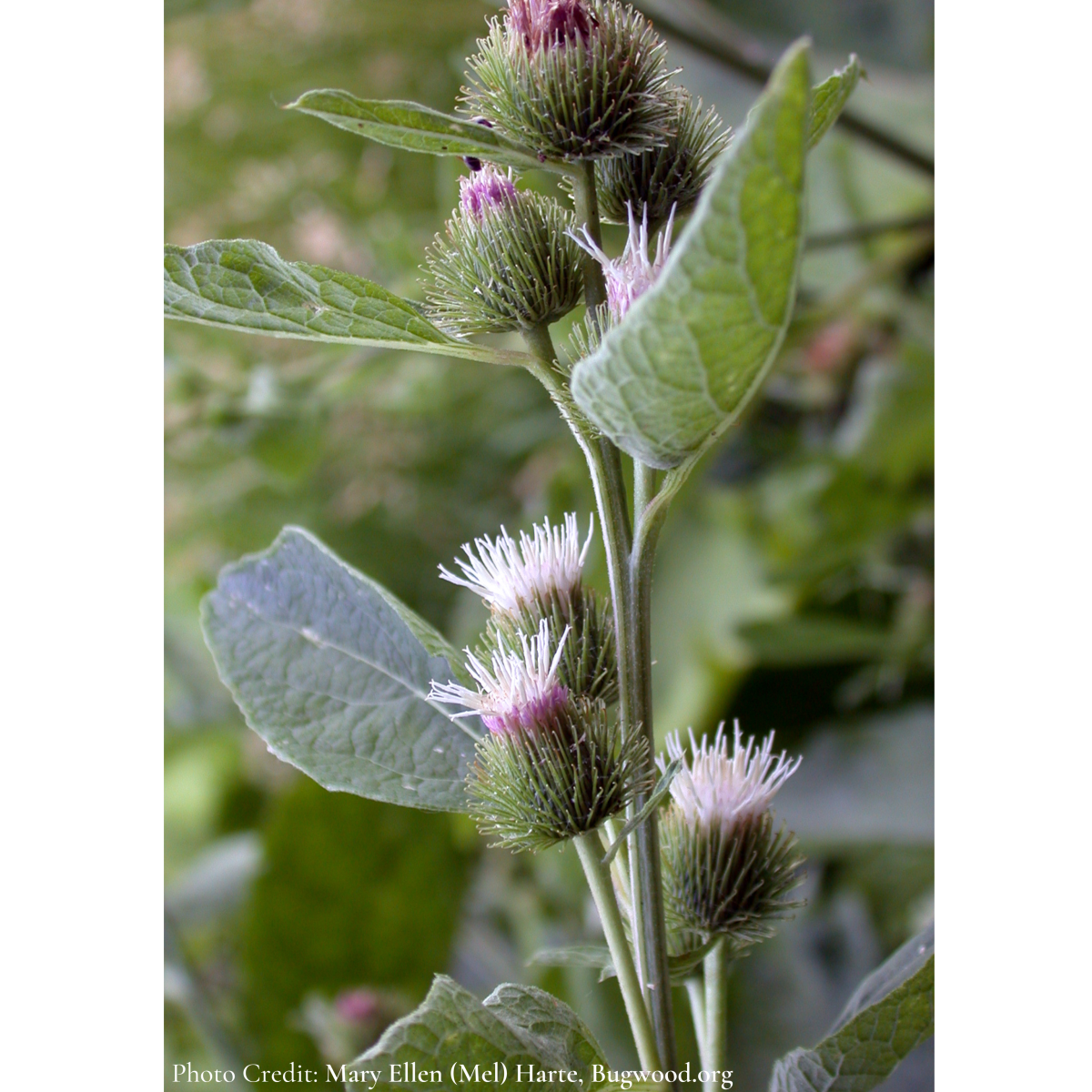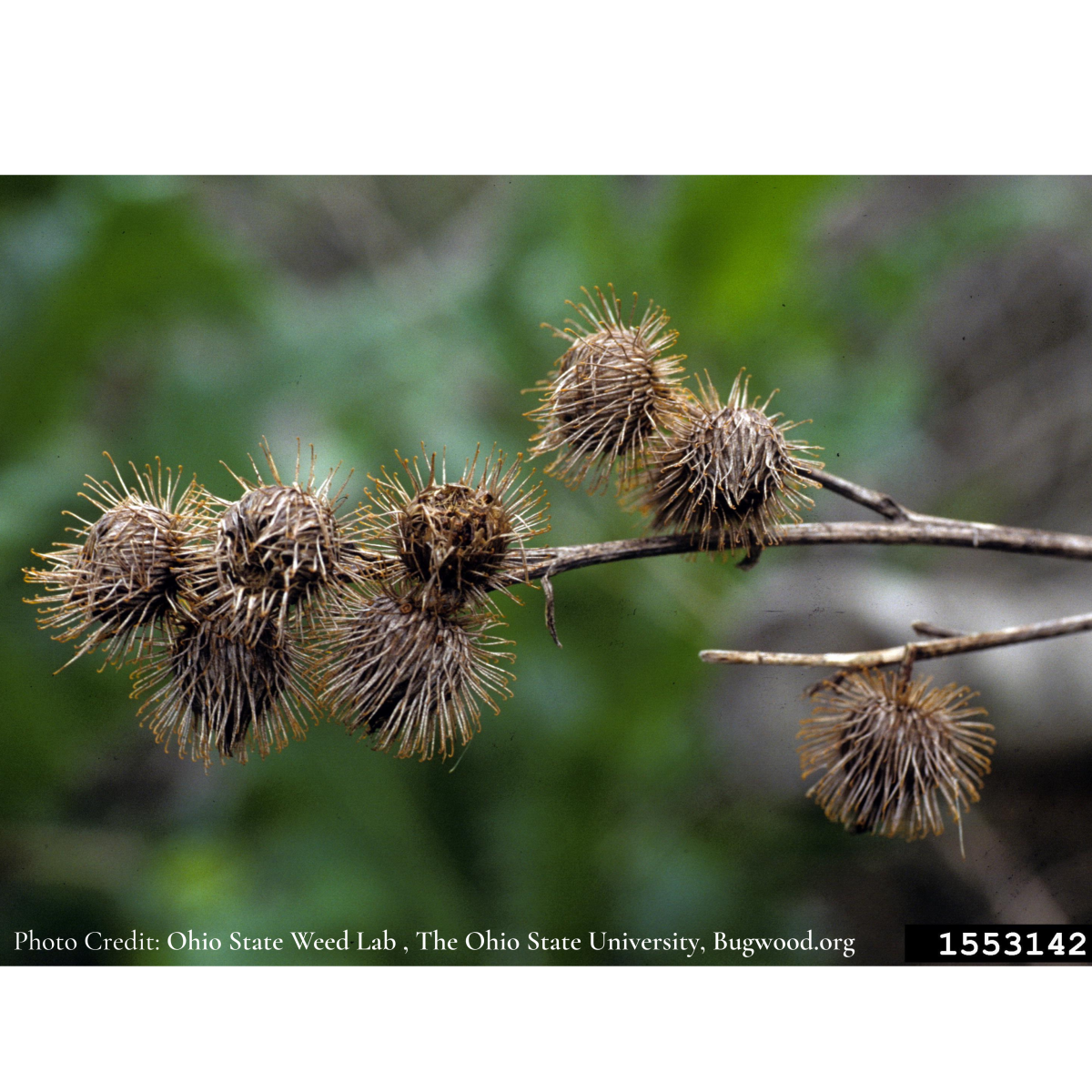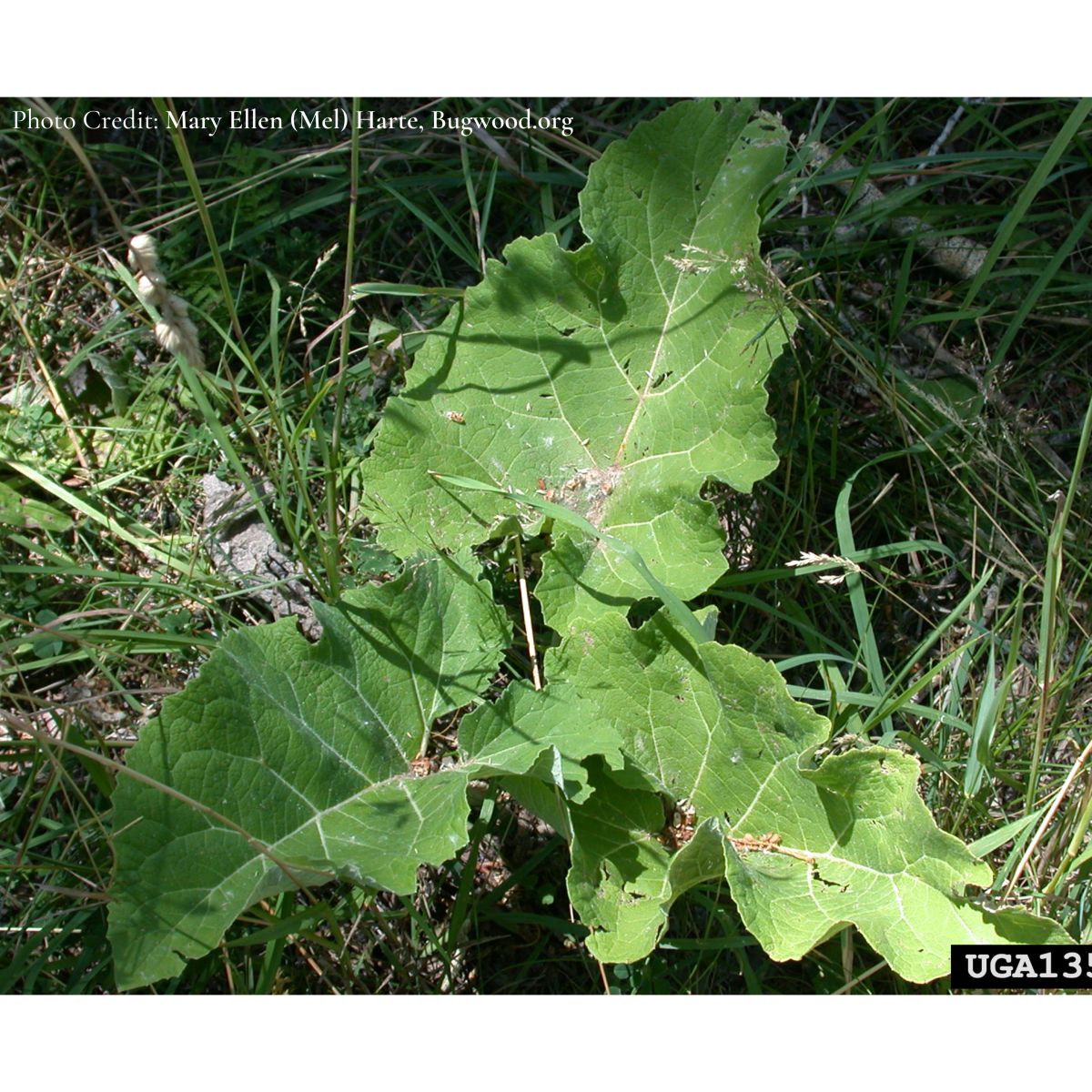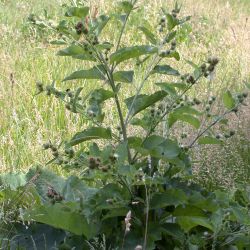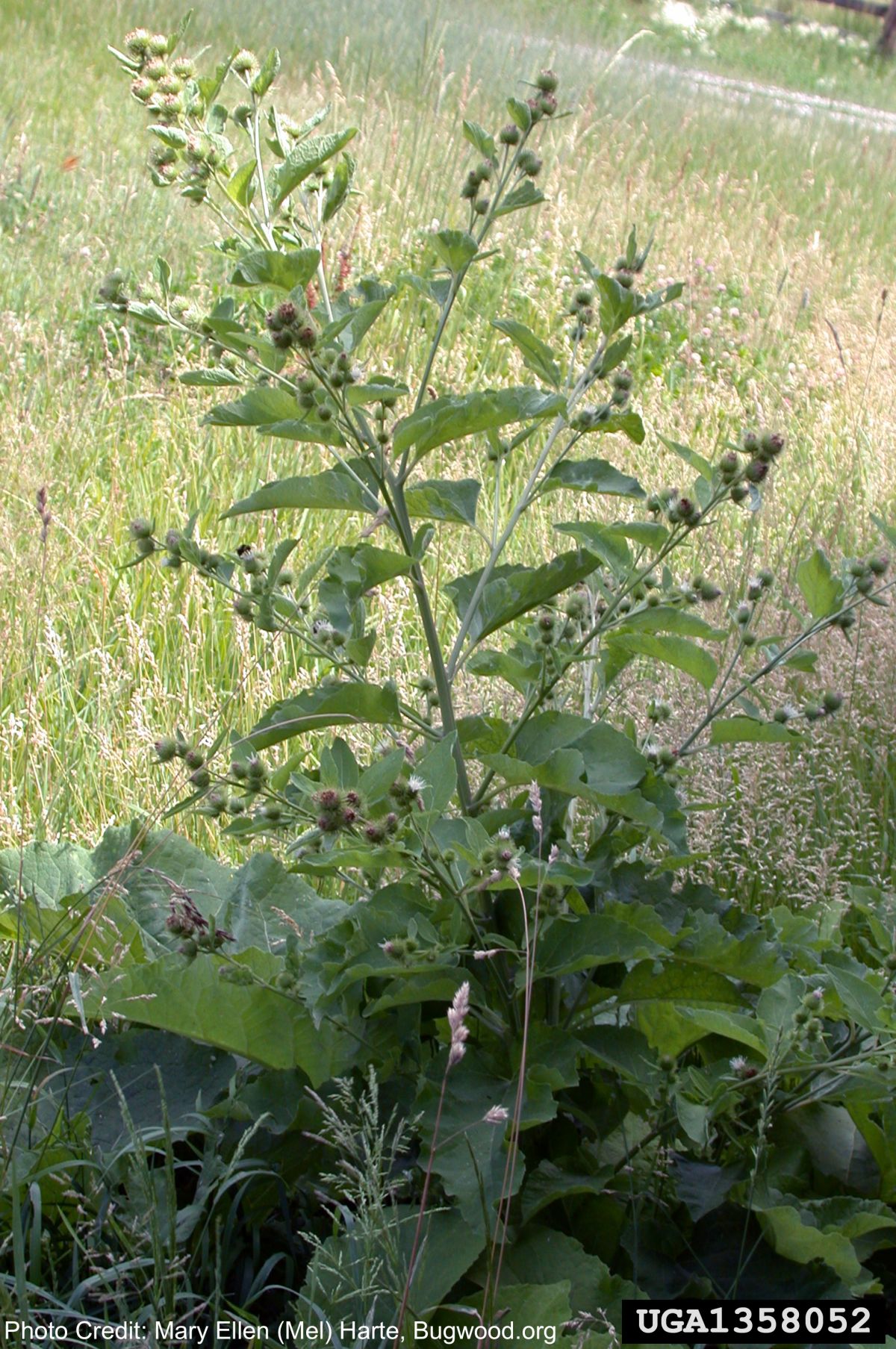
Priority: Strategic Control
General: Tall plant in the Sunflower Family that starts out looking like rhubarb and in its second year produces flowers and burs.
Height: Grows between 1 & 3m tall.
Flowers: Flowers are under 2.5cm across, purple in clusters grown from short stalks along the top of stems.
Leaves/Stems: Leaves are up to 50cm long and 30cm wide. They are dark green above and hairy below. The stem is grooved, rough and often very thick with thinner branch stems.
Root: Large taproot. The root has been used for herbal supplements and food.
Common Burdock, Lesser Burdock, Wild Burdock, bardane, Wild rhubarb, Beggers button
Cocklebur (Xanthium strumarium)
Differences: Cocklebur has smaller leaves with a spiny edge.
Where did it come from? Eurasia
Where does it grow here? It grows in a variety of environments but is often found close to a water source: streambanks, ditch lines and wetlands. It is found in most areas of our region especially along roadsides and disturbed areas.
Reproduction: By seed. One plant can produce between 6 & 16000 seeds per plant.
When does it grow, flower & seed? Sprouts March-April. Flowers May-July. Seeds August-October. The plant forms a first-year plant (rosette) that looks like rhubarb. In the following year, it bolts, flowers and goes to seed.
Spreads By: The burs have hooked spines that attach to animals and clothing.
Plant Type: Biennial
- Birds and bats can die as a result of being caught in burdock burs.
- Livestock are actually attracted to burdock and will eat it. This makes them susceptible to injury as a result of the burs. Burs can attach to the fur and face. The burs can cause eye infections. Burdock can taint any livestock milk with a bitter taste.
- Burdock can spread easily along stream corridors where wildlife, birds & bats travel for food & water. Burdock can reduce the number of native plants that this wildlife relies on for habitat and food.
- Burdock burs can become tangled in the fur, wool and manes of livestock. This can result in decreased market value for sheep wool and cattle.
- Review your property regularly for this species.
- Treatment Remove small patches before it flowers & sets seed. Manual removal has been most successful by the removal of all plant matter in the second year of growth. Cut the plant below the soil at least 2inches. Remove all leaves. Cut the plant when the plant is flowering. Tillage can work only when plants are small in the first year.
- Cover bare patches or disturbed soil by planting or seeding with non-invasives.
- Check areas where you have removed invasives for any new plants that year and in future growing seasons.
- Dispose of invasive plants responsibly. Bag them for disposal at the local landfill. Composting and burning are not recommended.
- Contact LRISS for specific treatment recommendations.
Southern Interior Weed Management Committee. 2016. Invasive Plants of the Southern Interior BC. 86pgs.
Photo Gallery
